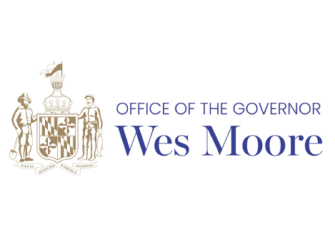
Maryland utility regulators green lighted a Danish company’s plans to build offshore wind turbines larger than originally proposed, but ordered the developer to work with Ocean City officials who fear the turbines could disrupt tourism.
The Maryland Public Service Commission announced Thursday that Skipjack Offshore Energy, a subsidiary of Danish company Ørsted, can use a wind turbine that is more than 800 feet tall — about 200 feet larger than its initial proposal.
Ocean City leaders objected to the change last year and asked the regulatory body to require Skipjack to locate the project at least 33 miles from the shore. City officials have raised concerns that the sight of turbines on the horizon could drive beachgoers to visit other summer resorts with uninterrupted views.
Ocean City officials and others who voiced concerns could not be reached for comment Friday.
The state regulatory panel’s 2017 order granting Skipjack ratepayer subsidies called for the company to use the best technology available, but acknowledged that the projects would take years and that turbine design would change over time.
Skipjack told the panel that using larger wind turbines would reduce the number needed for the project from 15 to 12 or fewer. The new model from General Electric also means the project’s distance from the Maryland shoreline to the nearest turbine would increase from 19.5 miles to at least 21.5 miles or more.
“Ørsted is pleased that the Maryland Public Service Commission approved the project’s longstanding commitment to use the best commercially available turbine technology,” said Brady Walker, Ørsted’s Mid-Atlantic Market Manager, in a statement. “The project will continue to engage with all stakeholders on creating a project that all Marylanders can be proud of. We look forward to continuing our work in delivering clean and reliable energy to over 35,000 homes in the Delmarva region.”
Although the panel acted in Skipjack’s favor, commissioners also described the company’s engagement with Ocean City officials as “meager” and took the extra step of ordering the developer to reengage with stakeholders.
Skipjack is ordered to provide detailed status reports on its engagement with stakeholders to the panel every six months until ordered to discontinue.
The industry is moving toward larger turbines because they can reach stronger winds higher off the ground and produce more energy. Plus, increasing the power capacity of one windmill can mean fewer of them need to be built, reducing installation and maintenance costs.
U.S. Wind, which plans to build a similar wind farm due east of Ocean City, has said it intends to build 32 turbines as much as 800 feet tall, 17 miles from the beach at the closest. It previously planned to build twice as many 541-foot turbines.
Baltimore Sun reporter Scott Dance contributed to this article.



